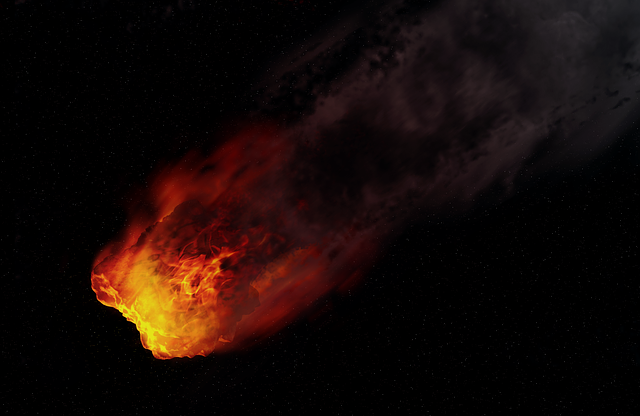
Planet Earth has been bombarded by space rocks since its formation millennia ago, but scientists are now investigating how many have made it to the surface.
As atmospheric entry disintegrates, most of these phenomena are seen as countless shooting stars in the night sky, but some survive and hit the ground in varying sizes over time.
Meteorites From Space
Meteorites are rocks from space that hit the surface insignificantly, but cataclysmic impacts like Chicxulub killed the dinosaurs about 66 million years ago in the Cretaceous period, reported Science Alert.
The strike was caused by a 6-mile asteroid or comet, which is one in a million. Smaller meteorites burning up in the atmosphere pale in comparison.
According to the work of scientists, 10,000 meteorites or space rocks fall on land or water each year, as opposed to the moon, which has been frequently struck over the millennia.
There is no atmosphere, so meteors and asteroids can hit the moon's surface as large as cars or as small as Ping-Pong balls, more so than on Earth per day and more than a year on planet Earth, noted ENEWS.
Space rocks would become meteorites, however still known as meteoroids or minor asteroids, which are the littlest objects in the solar system. Sizes range from 3-foot boulders to dust-sized micrometeoroids, citing the American Meteor Society (AMS).
These meteoroids are shards of asteroid or comet debris that make contact with planets or moons. One example is the 300 meteorites discovered on Mars.
These fiery, falling rocks are identified as meteors. As meteoroids push through upper orbit, they combust from air resistance and start producing light streaks from air resistance and start producing light streaks across the sky. A bright fireball is a meteor.
Based on the AMS, multitudes of fireballs alight each day across the Earth's sky. However, many of these take place over the ocean waters and other isolated places, and most are shrouded by daylight.
Rocks From Outer Space
Gonzalo Tancredi, an astronomer at the University of the Republic in Montevideo, Uruguay, said that most meteors that have been observed on Earth "emerge from the meteor showers connected with the dust ejected by comets."
Tancredi stated in an email to Live Science that meteor showers need not give rise to meteorites since the meteoroids in such showers are often too sensitive to survive the plunge to the surface. He calculated their annual impact rate on the surface of the Earth by studying the meteorological society's data.
There were 95 claims of meteorites falling onto Earth between 2007 and 2018, which averaged nearly 7.9 reports per year, a precise count of the number of meteorites that enter the ocean and sink to the bottom discretely.
According to Tancredi, only 29% of the Earth's surface is covered by land, with urban areas accounting for 0.44% of that area and housing roughly 55% of all people.
Based on his calculations, the overall number of terrestrial meteorites that reach Earth annually is approximately equal to the ratio of meteorites identified in urban areas to the quantity of Earth's land covered by urban sprawl.
Approximately 1,800 of the 6,100 meteorite falls that occur yearly over land are over the entire planet.Space rocks have pelted planet earth over millennia, and they varied in size, one example is Chicxulub, which killed the dinosaurs.
Related Article: Scientists Discover Fossil of Giant Sea Lizard That Terrorized the Seas During the Cretaceous Era








